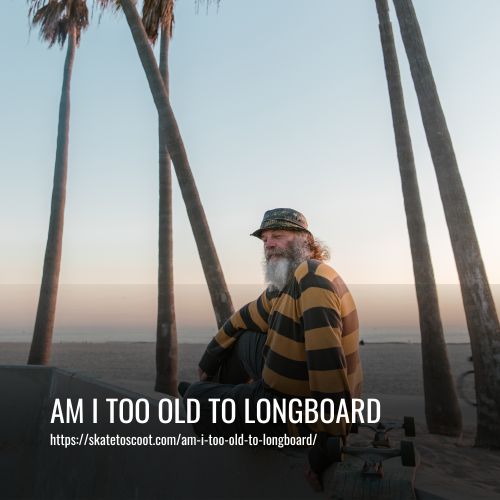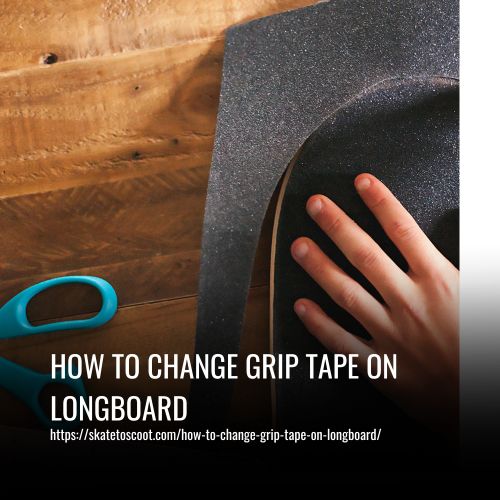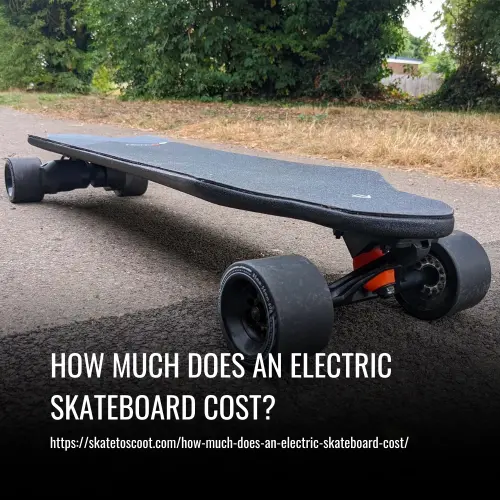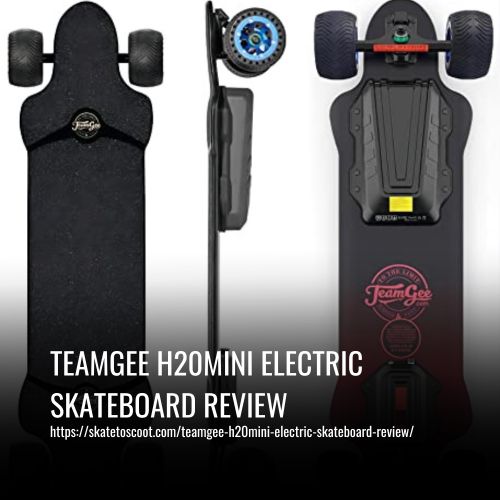As an Amazon Associate we earn from qualifying purchases.
If you’re a little bit older and wondering if it’s too late to learn longboarding, the short answer is no. Many people start longboarding in their 30s or even 40s, so there’s no age limit for picking up this fun and exciting activity. However, it’s important to consider your physical shape and potential limitations.
As we age, our bodies become less flexible and more prone to injuries. So, if you’re still healthy and in reasonable physical shape, there’s no reason you can’t learn longboarding. It might feel a bit awkward at first, but with practice, you’ll find your balance and have a ton of fun.

It Takes Time
Longboarding is not a skill that can be learned overnight, especially for adults. While younger individuals may pick it up quicker, it requires time, dedication, and practice to make progress. Starting longboarding at the right age is ideal, but if you missed out in your youth, don’t worry, it’s not a problem.
To see improvement, it is recommended to skate at least three times a week for an hour or two. Of course, it can be challenging to find the time due to work and family responsibilities, but the more you can skate, the better.
How fit are you?
Your physical fitness plays a crucial role in longboarding. Being in good shape, especially having a strong core, can make learning longboarding easier. If you are not in good shape, it is recommended to work on improving your fitness before starting. Consider going to the gym or working out at home to train your core and legs, and improve your flexibility.
Regardless of your fitness level, it is important to wear protective gear while longboarding. Beginners are more vulnerable to injuries, and common areas to injure are the ankles, knees, hips, and elbows. Don’t forget to protect your head as well, as you’ll need your brain to longboard!
Your goals as an older longboarder?
As an older individual looking to get into longboarding, it’s important to set realistic goals that align with your physical capabilities. While age may not matter as much as your overall fitness level and body’s abilities, it’s essential to be mindful of what your body allows you to do. Here are some common longboarding goals for older riders and their feasibility:
1. Riding around the neighborhood and short distances:
This is a great goal for individuals of any age, including those in their late 60s, as long as they are decently fit. It can be an enjoyable and low-impact way to stay active and explore your surroundings.
2. Commuting short distances:
If you’re looking to use your longboard for daily commuting, it’s feasible for fit individuals in their 30s, 40s, and 50s. Just be cautious of uneven pavements and cracked sidewalks to avoid accidents.
3. Distance pushing with carving on small hills:
For individuals in their mid-forties who are relatively fit but have never ridden any kind of board, distance pushing can be an excellent longboarding discipline. Take it slow, choose appropriate gear, and with practice, you’ll be riding smoothly within a couple of months.
4. Dancing on a dancer board:
Dancing on a longboard requires solid balance skills and joint mobility, making it more challenging, especially for those in their 50s or 60s with an average fitness level.
Older longboarder’s common injuries
Older longboarders commonly face health issues such as joint problems and injuries. The constant bending of the knees and changing directions can put a lot of stress on the knee joints, leading to instability or stiffness. Ankle sprains and joint dislocations are also common among older riders.
Tendonitis in the Achilles heel can develop from pushing too hard or for too long. Wipeouts can occur due to obstacles or speed wobbles, increasing the risk of wrist sprains or fractures. It’s important to note that older riders may not heal as quickly as they used to, making injuries more troublesome.
Injury prevention for older longboarders
As an older longboarder, there are important steps you can take to prevent injuries and continue enjoying your favorite board sport. Here are some key tips to keep in mind:
1. Physical Preparation:
- Warm up and stretch before every session. This helps loosen your muscles and joints, reducing the risk of strains or sprains.
- Incorporate exercises that target your core, legs, and balance. Building strength and stability will enhance your riding experience and reduce the chances of injury.
- Stay active off the board to maintain overall fitness. Engaging in activities like walking, cycling, or yoga can improve flexibility and endurance.
2. Riding Technique:
- Focus on maintaining good form and body mechanics while riding. This includes keeping your knees slightly bent, maintaining a relaxed posture, and distributing your weight evenly on the board.
- Practice proper foot positioning on the board to optimize control and stability.
- Take into consideration your age and physical abilities when attempting new tricks or maneuvers. It’s important to be realistic about what your body can handle to avoid unnecessary strain.
3. Gear:
- Invest in high-quality protective gear, such as knee pads, wrist guards, and helmets. These will provide essential protection in case of falls or accidents.
- Consider using padded shorts or knee braces for additional support and impact absorption.
- Choose a board that suits your riding style and physical shape. Opt for a stable and comfortable longboard or cruiser board that suits your skill level.
Abundantly stretch your posterior chain
Your posterior muscle chain plays a crucial role in maintaining balance and stability while longboarding. By incorporating effective stretching exercises into your routine, you can prevent injuries and enjoy a smoother ride. Here’s a concise guide on how to abundantly stretch your posterior chain before every longboarding session:
1. Understand the Importance:
- Your posterior chain includes your lower back, mid-back, glutes, hamstrings, and calves.
- Stretching these muscles helps improve flexibility, joint mobility, and overall performance on the board.
2. Foundation Training:
- Foundation Training is a set of isometric exercises designed to restore good posture and joint mobility.
- These exercises are highly effective in strengthening your posterior chain and preventing pain or discomfort.
- Check out a 4-minute exercise routine online to incorporate these postures into your stretching routine.
3. Benefits of Foundation Training:
- This method is used by famous professional surfers and athletes worldwide.
- It has helped individuals overcome joint problems and get back into board sports.
- If you’re experiencing serious spine, hip, or lower body pain, consider exploring complete posts and resources on Foundation Training for long-term relief.
Strengthen your core muscles
To ensure a safe and enjoyable longboarding experience, it’s important to strengthen your core muscles. By focusing on your lumbar, psoas, glutes, and quads, you can improve your stability and reduce the risk of injuries. Here are some simple yet effective exercises to strengthen your core muscles before hitting the board:
1. Squats:
- Squats are an excellent exercise to target your core muscles and build strength.
- Start with basic squats, ensuring proper form and technique.
- If you experience knee pain, modify the exercise by supporting yourself with your hands on a table in front of you.
- Gradually increase the intensity and number of squats as you become more comfortable.
2. Foundation Training:
- Foundation Training is a highly effective set of exercises designed to enhance posture and joint mobility.
- Incorporate Foundation Training exercises into your routine to strengthen your posterior chain and prevent discomfort.
- Look for online resources containing a 4-minute routine to follow before each longboarding session.
3. Benefits of Core Strengthening:
- Strengthening your core muscles can significantly improve your longboarding performance.
- It enhances stability, balance, and overall control while riding.
- Regular core strengthening exercises can reduce the risk of muscle strains and other injuries.
Train and reinforce your smaller joint muscles
To ensure a safe and injury-free longboarding experience, it is essential to train and reinforce your smaller joint muscles. These include the muscles around your hips, knees, and ankles, which play a crucial role in maintaining balance and stability while riding. Here are some effective ways to train and strengthen these muscles:
1. Warm-Up and Mobility Exercises:
Before hopping on your longboard, it is essential to warm up and increase the mobility of your smaller joint muscles. You can do this by standing on your longboard on a carpet or grass surface and moving around, shifting your balance for 5 to 10 minutes. This gentle movement helps get your tendons and ligaments loosened up.
2. Balance Board Training:
Using a balance board can be highly beneficial in strengthening the smaller joint muscles. Initially, it may be challenging to stand on the balance board if you are new to board sports. However, with practice, it becomes easier and helps strengthen the knee and ankle joints. This improved strength can prevent injuries during intense longboarding sessions. There are various balance boards available, such as the one found on Amazon, that can aid in your training.
3. Ankle Support:
If you experience strain or pain in your ankles during practice, consider using ankle braces or straps. These support devices can provide stability and protect your ankles in case of unnatural rolling or twisting movements. Investing in a supportive ankle brace, like the one available on Amazon, can help alleviate any concerns and provide added confidence while riding.
Riding techniques for older longboarders
Riding techniques for older longboarders can help make the experience safer and more enjoyable. Here are some tips to keep in mind when hitting the board:
1. Find Your Natural Stance:
As an older longboarder, it’s important to find your natural stance, whether regular or goofy (left or right foot in front). Take your time to experiment and get comfortable with the stance that feels most natural to you.
2. Start Slowly:
Begin your longboarding journey at a walking pace, such as on a flat parking lot. This allows you to gradually build up your skills and get familiar with the board’s movements.
3. Learn to Push and Foot Brake:
Mastering the art of pushing and foot braking is essential for safe longboarding. Practice pushing off the ground with one foot while rolling, and learn to use foot braking techniques to control your speed.
4. Bend Your Knees and Rotate Your Body:
Proper body positioning is crucial for turning on a longboard. Learn to bend your knees, rotate your body, and lean into your turns to maintain balance and control.
5. Control Speed Through Carves:
Instead of relying solely on foot braking, practice controlling your speed through successive turns, also known as carves. This technique helps maintain momentum while keeping your speed in check.
6. Utilize Balance Aids:
If you’re struggling with balance, consider using balance aids like a land paddle stick or a slogging stick. These tools not only help improve your balance but also introduce alternative riding styles.
7. Modify Your Kick Pattern:
Repetitive footwork can sometimes lead to knee or heel pain. To avoid this, experiment with different kicking intensities and variations in foot placement. Finding a more natural kick pattern can help alleviate discomfort and allow for longer pain-free sessions.
Longboard setup and safety gear for older longboarders
Longboard setup and safety gear for older longboarders is essential for an enjoyable and safe riding experience. Here are a few tips to keep in mind:
What kind of board do you need?
When it comes to longboarding as an older rider, finding the right board is crucial. You want a board that will help you maintain balance and build muscle without putting excessive stress on your joints. Stability and comfort are key factors to consider.
Riders in their thirties, forties, and beyond often choose larger boards ranging from 38″ to 42″ in length. These drop-through boards have a lower ride height, offering increased stability and minimizing knee strain while pushing and foot braking.
While you may not be interested in extreme downhill rides, it’s still important to choose a deck that offers some flex for comfort and shock absorption. A little bit of flex can also enhance pumping, which many older riders enjoy.
What about trucks and wheels?
When it comes to trucks for longboarding, older riders should look for a balance between maneuverability and stability. You want trucks that allow you to carve smoothly without putting excessive strain on your knees, ankles, and feet. Avoid trucks that are too loose, as they can affect stability and make pushing harder during longer distances.
For wheels, bigger and softer options are generally ideal for older riders, unless you plan on freeriding and sliding. Larger wheels, such as 85mm Speed Vents, are great for distance skating, as they roll faster and smoother over cracks, bumps, and paved stones. With these wheels, you can average around 10 mph on a 30-mile push. However, if street cruising and carving are important to you, wheels that large may hinder agility.
Wear safety gear
Wearing safety gear is essential for longboarders of all ages, including older riders. While it may seem obvious, it is important to emphasize the importance of wearing a helmet and pads to protect yourself from potential injuries.
Even at low speeds, accidents can happen, and the risk of injuries increases as we age. Many older longboarders have experienced wrist sprains or fractures while going at slow speeds or performing simple maneuvers. For instance, hitting a pebble on the road can cause the board to come to an abrupt stop, sending the rider flying off and potentially resulting in a broken wrist or other serious injuries.
Tips If You’re Over the Age of 19
Longboarding can be a fun and exhilarating activity, regardless of your age. However, if you’re over the age of 19 and considering taking up longboarding, there are a few tips to keep in mind to ensure a safe and enjoyable experience.
- Be Honest with Yourself: Longboarding can be physically demanding, especially for older individuals. Before getting started, evaluate your physical shape and determine if you are capable of handling the physical challenges of longboarding. Take it slow and don’t push yourself beyond your limits to prevent injuries.
- Relax and Enjoy the Learning Process: It’s important to understand that learning to longboard takes time. Don’t get frustrated if it takes you longer to grasp the basics compared to younger riders. Remember that there is no final goal in longboarding – it’s about having fun and pushing yourself at your own pace.
- Allow for Slower Healing: As we age, our bodies take longer to heal. It’s essential to be aware that injuries can happen while longboarding. Take your time and don’t push yourself past your limits. If you do get hurt, give yourself the necessary time to recover. Always wear a helmet and consider additional protection like elbow and wrist pads.
- Invest in Quality Gear: As an adult, you might have more financial flexibility in purchasing quality longboarding gear. Don’t cut corners when it comes to your safety. Invest in good longboarding shoes that fit well and provide adequate support. Additionally, opt for a quality board from a reputable skateboard shop to ensure stability and performance.
- Seek Help and Advice: Local longboard shops are often run by experienced and older skaters who can offer valuable guidance and assistance. Don’t hesitate to reach out to them when starting out. Let them know your concerns and ask for recommendations on what gear to buy and how to get started.
FAQs
No, you’re never too old to start longboarding! Longboarding is a sport enjoyed by people of all ages. Whether you’re in your 20s, 30s, 40s, or beyond, longboarding can be a fun and rewarding activity.
Choosing the right longboard size is essential for a comfortable and enjoyable ride. Generally, longboards between 38-42″ in length and around 9″ wide are suitable for someone who is 5’4″. However, it’s important to consider your personal preferences and riding style when selecting a board.
While being in good physical shape can enhance your longboarding experience, it’s not a requirement. Longboarding can be a great way to improve your fitness level, as it engages various muscle groups and promotes balance and coordination.
It’s always wise to wear protective gear while longboarding, regardless of age. Knee pads, wrist guards, and a helmet are essential for your safety. Additionally, padded shorts can provide extra protection against potential falls.
The choice between a cruiser and a traditional longboard depends on your personal goals and riding preferences. Cruisers are generally more stable and easier to maneuver, making them a great option for beginners. Traditional longboards, on the other hand, offer more flexibility and are suitable for different riding styles.
Conclusion:
Age is just a number when it comes to longboarding. Don’t let anyone tell you that you’re too old to enjoy the thrill and freedom of cruising on a longboard. Embrace your inner adventurer, defy expectations, and keep carving those streets with a smile on your face.
Remember, it’s never too late to chase your passions and live life to the fullest. So grab your board, feel the wind in your hair, and let the joy of longboarding remind you that age is simply a state of mind. Keep pushing, and keep shredding!
Amazon and the Amazon logo are trademarks of Amazon.com, Inc, or its affiliates.



